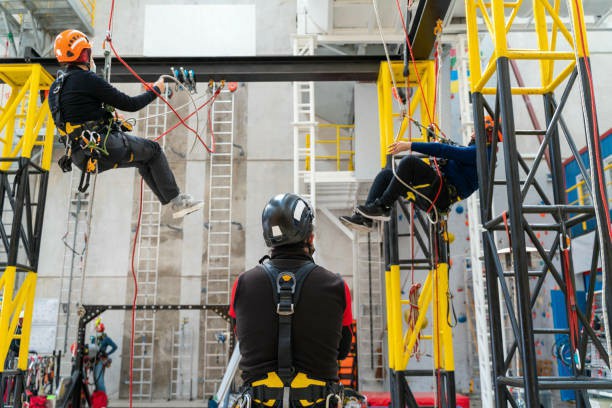


 349,500 Offered Certificates
349,500 Offered Certificates
 24/7 Online Training
24/7 Online Training
 Money Back Guarantee
Money Back Guarantee
 Fully Accredited Courses
Fully Accredited Courses

Created at: 22-02-2025 18:28
Working at heights presents significant safety challenges that require vigilance, proper training, and adherence to protocols. Unfortunately, many workers still encounter common pitfalls that put their safety at risk. Understanding these mistakes and how to mitigate them through Working at Heights training is essential for any job that involves heights.
Despite advancements in safety protocols, several recurring mistakes can lead to accidents and injuries:
One of the most common errors is the misuse of equipment. Workers may use equipment that is not properly rated for the task, leading to catastrophic failures. Examples include:
Overlooking thorough risk assessments is another common mistake. This process allows workers to identify potential hazards. Some specific errors include:
Following established safety procedures is crucial when working at heights. However, many workers neglect this practice:
The implications of these errors can be devastating, not only for the workers involved but also for the organization as a whole:
Structured Working at Heights training programs provide the necessary education to avert these mistakes. Here are the key areas where training can make a difference:
Training programs educate workers on the proper use of equipment, emphasizing the importance of inspecting and maintaining gear regularly. This will include:
The right training will empower workers to conduct thorough risk assessments by:
Effective training reinforces the importance of following safety procedures, including:
Many organizations have reported a significant decrease in workplace accidents after implementing comprehensive Working at Heights courses. For example, one construction company in Dublin revamped their training program, resulting in a 50% drop in fall-related incidents over a year. The feedback from employees highlighted their increased awareness of safety practices due to structured training.
Working at heights can be an inherently dangerous task, but many of the common mistakes that workers make are easily preventable with proper training. By investing in Certified Working at Heights Training, organizations can ensure that their employees are well-equipped with the knowledge and skills to perform their tasks safely. Don’t wait until an accident occurs—enroll in a Working at Heights Safety Course today, and make your workplace a safer environment.
If you’re interested in signing up for a Working at Heights Course Online or have questions about Working at Heights Certification Ireland, feel free to reach out at [email protected] or visit our website for more information: Ireland Safety Training.